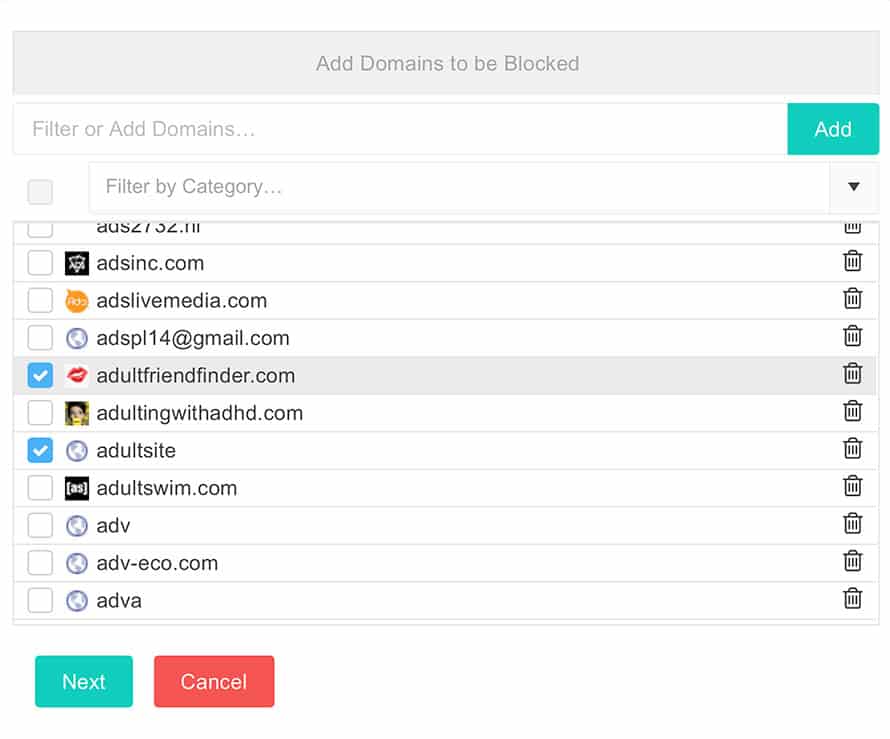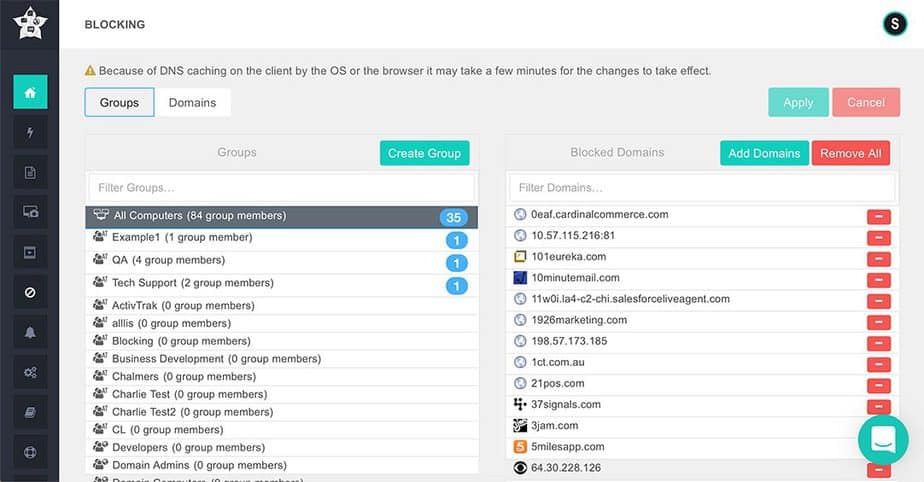Each day, over five billion Google searches are made around the world. Those search results can yield any combination of pages stemming from the internet's 342 million registered domain names. With websites made for anything between instructionals for crocheting and platforms to find a date, it's safe to say that organizations probably don't want employees to have access to every website in existence. That's why managers at any level should know how to block a website.
It's beneficial for businesses to use a website blocker for a number of reasons. The strongest use cases, though, are improving productivity, security, and preventing access to inappropriate websites.
1. Block Unproductive Websites
Personal internet usage at work can be a big productivity killer. A recent study revealed that businesses who aren’t proactive about blocking unproductive websites see 58% of their employees spending at least four hours per week on websites unrelated to their job. When you do the math, that comes out to 26 workdays each year!
Expecting employees to use the internet only for work-related activities is a little unrealistic these days. However, it is beneficial to block the websites that have the highest chance of creating a disengaged office.
[caption id="attachment_6754" align="aligncenter" width="835"] Make sure to be up front with employees about what is not acceptable use of the internet while at work.[/caption]
Make sure to be up front with employees about what is not acceptable use of the internet while at work.[/caption]
Websites can be both productive and unproductive depending on who is using them. Social Media Managers will need to spend a lot of time on Facebook while a customer success manager might not need it. It's up to each administrator to determine which sites are unproductive and for whom. To increase productivity, an article from CNBC includes a list of 10 sites to consider blocking: Facebook, YouTube, Reddit, Ebay, and Craigslist.
2. Block Dangerous Websites
When looking at the top 100,000 websites as ranked by Alexa, 4 out of every 10 of those sites are considered dangerous. Visiting sites like these can result in the distribution of malware or attacks on a corporate network.
Though you can’t know of every single dangerous site, you can be proactive in blocking access to the ones you know have the potential to do harm.
Don't know where to start? A blog post over at Malwarebytes lists dozens of harmful domains, like webcompanion.com, rapidvideo.com, and safety4browser.com.
3. Block Inappropriate Websites
Adult websites are examples of the types of website that can spread malware, as demonstrated by an employee of the U.S. Geological Survey.

Visits to inappropriate websites by employees can also be grounds for lawsuits. When coworkers are exposed to the type of content on adult websites, there's the potential for sexual harassment lawsuits or even hostile work environment lawsuits.
By blocking adult sites, you're not only preventing legal battles. You're also protecting innocent employees from being exposed to offensive content.
Block Websites with ActivTrak's Website Blocker
Ideally, you want to use a blocking tool like ActivTrak's to keep an ever-expanding list of the sites you choose to block. Sure you could go in to each individual computer and block websites manually. Ideally, you want to have the ability to maintain a list of blocked domains for individuals, groups, or entire organizations from one place. You especially want to make sure you can easily add, remove, and modify your lists as needed.

How to Block a Website:
- Select a preexisting group from the Group section, or create a new group by clicking the “Create Group” button. Each group can contain any number of users.
- From the Block Domains section, click the “Add Domains” button.
- In the “Select Domains” pop-up window, enter a new domain or choose one from the pre-populated list.
- Check the box for each domain you want to block from the group you’ve already selected. Click “Add.”
- Verify your work. Click the green button labeled “blocked” and confirm the websites you added are now part of your list.





